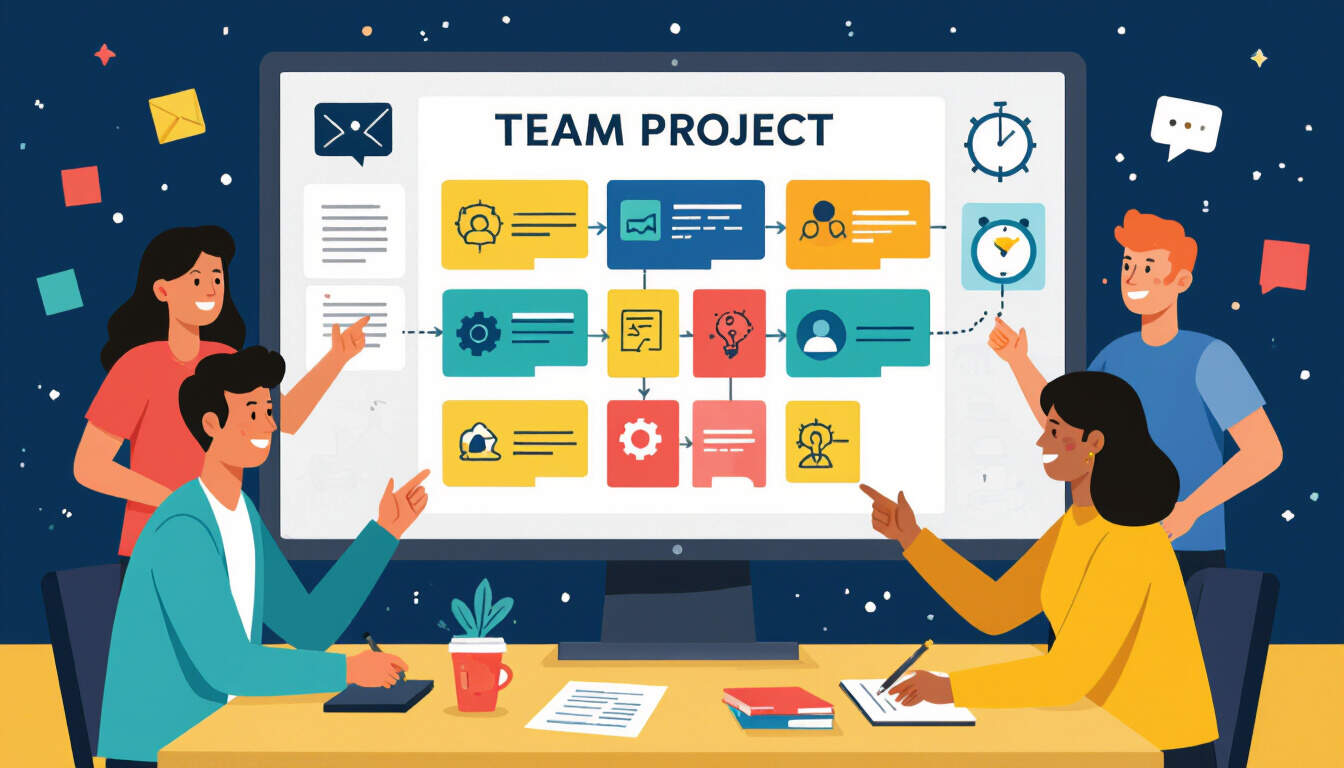No-Code Tools for Streamlining Project Management in MVP Validation
 by Thaddeus Blanda
by Thaddeus Blanda
Discover how no-code tools simplify project management for entrepreneurs validating MVPs. Learn practical strategies to organize tasks, track progress, and gather feedback efficiently, all without writing code. This approach saves time and resources while boosting innovation.

No-code tools have transformed how teams handle project management, especially for those focused on MVP validation. These platforms allow users to build and manage projects through intuitive interfaces, making it easier to test ideas quickly.
One key advantage of no-code project management is its accessibility. For startups, this means anyone can set up workflows without technical skills. For instance, tools like Trello or Asana enable users to create boards and lists that organize tasks visually.
In the context of MVP validation, no-code tools help maintain focus on core objectives. They allow teams to define milestones and assign responsibilities clearly, ensuring that every step aligns with testing assumptions about a product.
Consider how these tools facilitate collaboration. Team members can update progress in real-time, reducing delays and improving communication. This is particularly useful for product managers who need to iterate based on user feedback.
Benefits of No-Code for MVP Projects
Adopting no-code solutions offers several practical benefits. First, they reduce costs by eliminating the need for developers early in the process. This lets entrepreneurs allocate resources to other areas, such as market research.
Another benefit is speed. With MVP validation, time is critical, and no-code tools allow for rapid prototyping. Users can set up project timelines and track deadlines using simple drag-and-drop features.
Here are some strategies to implement effectively:
- Start with a basic setup: Begin by outlining key tasks in a single board to keep things straightforward.
- Integrate feedback loops: Use built-in comment sections to collect input from testers, helping refine the MVP.
- Monitor progress: Employ visual indicators to spot bottlenecks, ensuring the project stays on track.
Many successful startups have used these methods. For example, a team building a new app might use no-code tools to manage user testing phases, gathering data to validate features before full development.
Selecting the Right Tools
When choosing a no-code tool for project management, consider factors like ease of use and scalability. Options vary, but those with customizable templates can adapt to different project sizes.
For MVP validation, tools that support automation are ideal. They can handle routine tasks, freeing up time for creative problem-solving. This automation ensures that repetitive processes, like status updates, occur without manual intervention.
Practical tips include:
- Customize views: Tailor dashboards to show relevant metrics, such as completion rates or user engagement.
- Set reminders: Use notifications to keep the team accountable and maintain momentum.
- Analyze outcomes: After validation, review project data to inform future iterations.
The motivational aspect comes from seeing tangible progress. Entrepreneurs often find that completing small tasks builds confidence, encouraging them to push ideas forward.
In practice, no-code project management fosters a culture of experimentation. Teams can test multiple ideas simultaneously, using tools to compare results and decide on the best path.
Overcoming Challenges
While no-code tools are helpful, challenges may arise, such as learning curves or limitations in advanced features. However, these can be addressed through online resources and community support.
For product managers, the key is to start simple and expand as needed. This approach ensures that project management remains efficient throughout the MVP process.
Ultimately, the ability to validate ideas quickly empowers startups to innovate. By leveraging no-code tools, teams can turn concepts into testable products, paving the way for success.
Real-World Application
Take a hypothetical scenario: An entrepreneur wants to validate a new e-commerce feature. Using a no-code tool, they set up a project board with phases for design, testing, and feedback. As the MVP launches, the tool tracks user interactions, providing insights for improvements.
This method not only saves time but also builds a foundation for scalable operations. As projects grow, the same tools can handle more complex needs, supporting long-term goals.
In summary, no-code tools make project management accessible and effective for MVP validation. They enable entrepreneurs to focus on what matters most: bringing innovative ideas to life with efficiency and confidence.
